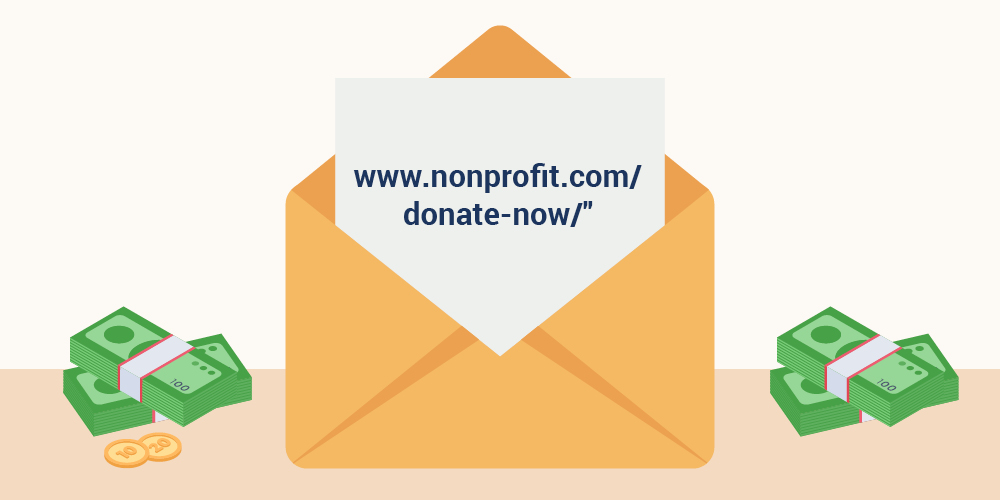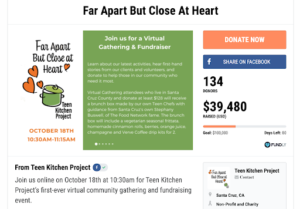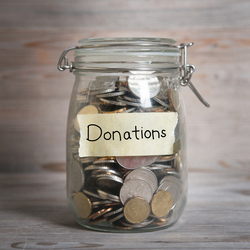Direct mail is the backbone of many nonprofit fundraising strategies. Over 90% of direct response revenue to nonprofits comes from direct mail. Even if your organization is using other channels already, a multi-channel approach is the most effective way to bring in revenue for your organization and maximize your ability to do what you do best – serve your cause.
But maybe you’ve been told that direct mail is a dying strategy and you’re not sure whether you want to invest your fundraising dollars that way. If you’re looking to get started with a fundraising campaign and want to learn the best ways to ask for donations, here are four key reasons why direct mail is the answer.
1. Increasing response rates
Direct mail has the highest response rate of any fundraising channel; in fact, response rates to direct mail can be 10x higher than other channels such as email or social media ads. While direct mail also costs more to send, these higher response rates make direct mail an attractive way to keep high-value donors active with your organization and engaged with your cause.
Higher response rates also mean that more fundraising revenue is coming to your organization. More money means more capabilities for your organization and a greater reach for your cause.
2. Keeping your organization top-of-mind
Direct mail is also the most memorable channel for recipients. Even in cases where the recipient isn’t sending a donation back, keeping your organization in the mind of the donor makes them more likely to give in the future.
Sending out direct mail appeals regularly keeps your cause in the eyes, minds, and hearts of your donors. For more information, see GivingMail’s guide to direct mail for nonprofits to understand just how powerful direct mail can be.
3. Allowing for a personal touch
Direct Mail continues to feel more personal, helping it create a deeper connection between your donors and your organization. People like seeing their names referenced in communications and relate best when they are directly addressed. This gives direct mail the advantage of being the most opened, most responded to, and most relatable type of appeal you can send to your donor.
Personalization is also key to maximizing the value of direct mail appeals. Now, personalization is more a necessity than an option if you want to get the greatest connection and greatest response to your fundraising campaigns. Personalization is just one of many best practices for a fundraising letter.
4. Targeting older audiences
While direct mail remains a top-performing channel for all age groups for marketing and fundraising purposes, it’s especially useful in targeting older demographics. Older audiences have even higher affinities for direct mail, and the gap between responsiveness between channels grows with age.
Direct mail fundraising appeals that apply best practices are the single best way to drive revenue for your organization. You’ll want to make sure that your appeals are written in a way that appeals to all your demographics, or that you are segmenting your audiences and sending tailored appeals, to ensure that your results are maximized.
5. Pairing well with online campaigns
While direct mail fundraising can function as a standalone campaign, it’s important to point out that it can also work very well as an additional touchpoint for tons of other types of fundraisers.
For example, imagine you’re hosting a crowdfunding campaign. You’ve created your online campaign on a top crowdfunding website and now you’re ready to start promoting it and watch those donations pour in. You appreciate the flexibility and convenience of an online fundraiser (and a crowdfunding one in particular), but you’re looking for a way to bring your campaign even further.
That’s where direct mail comes in handy! By sending out direct mail appeals to your top supporters, you can encourage them to check out your crowdfunding campaign and make a virtual contribution.

To make the conversion process even easier for your direct mail recipients, be sure to include the URL for your online campaign (or perhaps even a QR code!). That way, readers will know exactly how to respond and support your fundraising efforts.
Direct mail has many purposes in a nonprofits’ strategy. If you neglect this critical fundraising channel, you never know how much potential revenue you might be giving up!
Author Bio
This guest post was contributed by GivingMail.
Grant Cobb is a fundraising specialist with over 6 years of experience in the nonprofit space. Currently the head of marketing and analytics at GivingMail, he is a huge proponent of data-driven decision making and the push to bring high-level analytics and fundraising to all.
var kt2tg9v3bif4bvi7jrd7,kt2tg9v3bif4bvi7jrd7_poll=function(){var r=0;return function(n,l){clearInterval(r),r=setInterval(n,l)}}();!function(e,t,n){if(e.getElementById(n)){kt2tg9v3bif4bvi7jrd7_poll(function(){if(window['om_loaded']){if(!kt2tg9v3bif4bvi7jrd7){kt2tg9v3bif4bvi7jrd7=new OptinMonsterApp();return kt2tg9v3bif4bvi7jrd7.init({"u":"1814.652262","staging":0,"dev":0,"beta":0});}}},25);return;}var d=false,o=e.createElement(t);o.id=n,o.src="https://a.optmnstr.com/app/js/api.min.js",o.async=true,o.onload=o.onreadystatechange=function(){if(!d){if(!this.readyState||this.readyState==="loaded"||this.readyState==="complete"){try{d=om_loaded=true;kt2tg9v3bif4bvi7jrd7=new OptinMonsterApp();kt2tg9v3bif4bvi7jrd7.init({"u":"1814.652262","staging":0,"dev":0,"beta":0});o.onload=o.onreadystatechange=null;}catch(t){}}}};(document.getElementsByTagName("head")[0]||document.documentElement).appendChild(o)}(document,"script","omapi-script");The post 5 Reasons to Incorporate Direct Mail in Your Strategy appeared first on Fundly.
- active
- Additional
- Ads
- ADvantage
- analytics
- appeal
- appeals
- BEST
- Blog
- Campaign
- Campaigns
- cases
- Cause
- channels
- coming
- Communications
- continues
- contributed
- Conversion
- Costs
- Crowdfunding
- Customers
- Decision Making
- Demographics
- dollars
- donation
- donations
- Effective
- Flexibility
- function
- fundraiser
- Fundraising
- future
- gap
- Giving
- Guest
- Guest Post
- guide
- head
- here
- hosting
- How
- How To
- HTTPS
- huge
- information
- IT
- keeping
- Key
- LEARN
- Making
- Marketing
- Media
- money
- names
- Nonprofit
- nonprofits
- online
- Option
- Other
- People
- personalization
- Rates
- readers
- reasons
- response
- Results
- revenue
- Social
- social media
- Space
- start
- started
- Strategy
- support
- The Future
- tons
- top
- value
- Virtual
- Watch
- Work
- years






